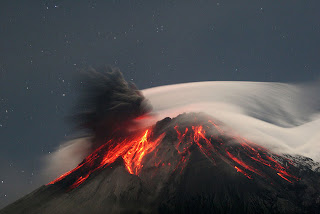
I am currently an intern in a newspaper here in Ecuador so it was really interesting to read Barbie Zelizer’s Photography, Journalism and Trauma. Even tough there is not a traumatic even each day, thank God, it is still a very fast passed and tense environment in which you have to act quickly and make decisions on the spot. Photographs are obviously a major part of the newspaper because they are the one thing that every single reader can understand, so it is important to know which picture will speak for itself and cause an impression. Zelizer mentioned something really important which was that it is usually hard picking the right picture to go along with the story but it is even more difficult during a crisis or trauma. And ‘it is here that historical precedent becomes relevant. In the best of cases journalism involves the application of routine practices to unpredictable circumstances.one place from which to gain directives…is from earlier events in other times and places’, this is very curious because you would never think that one crisis could resemble another in almost anything. But what she means is that even though two events can be complete different like the example she presents between 9/11 and the Holocaust, they could still resemble the template of the latter one because it was that same collective sentiment of shock and horror that you are trying to evoke through the photograph.
I think that one of the first images that comes to my mind when I think of one of the most incredible and at the same time terrifying things I had ever seen. On October 11th, 1998, the volcano Guagua Pichincha erupted, and this is a volcano that is literally in the city. Thousands of people had to be evacuated, we were at my school and we could see it, and my school is not near the volcano at all. At the next day after the huge explosion had seized, it was amazing to see the image on the covers of newspapers. I feel that it does not follow the template of the Holocaust example, but I do feel that it followed the template of 9/11 in the sense that it made this one image of the volcano iconic and made everyone bear witness the event over again. This image became iconic insofar as it is a permanent reminder of how little control we can actually have, also the power of nature and the risk of living in a city so near to an active volcano. 
A more recent example is the eruption of another volcano near Quito called Tungurahua. It is the most active of the volcanoes and recently it has been having a lot of explosion, I actually saw one the other week I went to a trip near it. Every time something like this happens the images of the volcanoes become very iconic because they remind us of their power to destroy and of how much damage they can cause.
Here is a link to see the recent activity of Tungurahua:
http://www.youtube.com/watch?v=VOYxQQxscUQ&feature=related
Great example to tie in with 9/11 and the Holocaust even though it is an opposite example. The pictures you included are amazing. The images do become very iconic, whether it is 9/11 or the volcano, because they remind us of life and how fast it can end. Great blog!
ReplyDelete